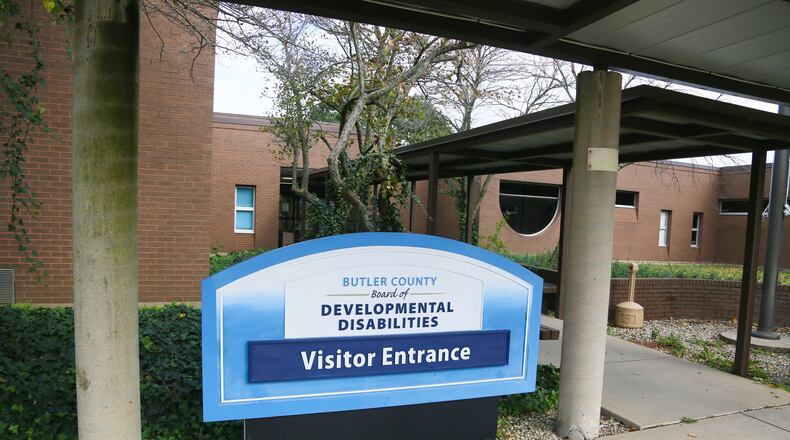“For the past 21 years, we have worked diligently to honor the commitment that voters last made to us in 2004 to provide lifelong services to Butler County residents with developmental disabilities and their families,” said Butler County Board of Developmental Disabilities Superintendent Lee Ann Emmons. “We intend to continue doing this very important work. I’m proud to work with a dedicated team that is so willing to pivot during this challenging time to ensure that our community continues to thrive.”
What the levy could be is unknown at this time, according to the agency. Any levy would require the sign off by the Butler County Commission, which meets Tuesday.
Credit: Nick Graham
Credit: Nick Graham
Butler County Board of Developmental Disabilities directors have said they prolonged what they have called “the inevitable,” according to the agency.
The board operates on a pair of levies, a 2-mill continuing levy passed in 2000 and a 1-mill continuing levy passed in 2004 with no significant increase in collections. In 2024, the two levies combined to generate $22.93 million, but deficit spending is projected by the first quarter of 2027.
Additionally, since the board does not collect inside millage (unvoted property tax income), the two levies have depreciated over the past two-plus decades.
The average single-family home in Butler County in 2000 was valued at around $113,000. Since then, the agency said, the median single-family home has appreciated by 110% but Butler County Board of Developmental Disabilities collects on 2000 and 2004 home values.
The recent $20.1 million property tax rollback approved in September by the commissioners also has impacted the board’s budget projections.
In a memo from the Butler County Board of Development Disabilities to the Butler County administrator, the agency reported “for the past two years, our deficit spending has outpaced our revenues at a rate that is unsustainable due to rising cost of providing Medicaid waiver services.”
Medicaid waver matches, which is funding so people with developmental disabilities can safely live, work and be a part of the community rather than live in an institution, is the largest line-item expense for the agency. In 2024, around 1,200 Butler County residents received waiver-funded services. Twenty years earlier in 2004, there were only 250.
Additional cost-saving measures, which will largely begin next year, include personnel and benefit adjustments. This will result in more than $1.5 million in savings, and includes, reduced work hours (all 150 full-time staffers will take a 2.5-hour reduction which equates to nearly 7% pay decrease), a freeze of raises and cost of living adjustments, and all promotions are frozen. Additionally, any vacated positions won’t be filled before a close examination, according to the agency. The few part-time employees are not impacted.
The board said it has already made more than $330,000 in cuts that impact services and supports, and nearly $250,000 in cuts related to non-personnel/benefits.
About the Author

